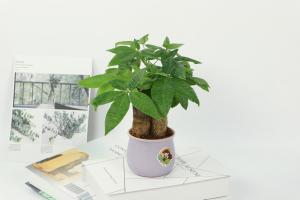What to Use to Tie Tomato Plants
Tomato plants are an essential part of any vegetable garden, and as they grow, they need support to ensure their healthy growth. One of the most critical aspects of tomato plant support is tying them up. By doing so, you can prevent the plants from feeling the weight of heavy fruits and ultimately breaking. Furthermore, tying tomato plants can help to improve air circulation and increase sunlight exposure, which will encourage tomatoes to mature faster. In this article, we will discuss the best materials to use when tying tomato plants, as well as techniques for doing it.
Materials for Tying Tomato Plants
When it comes to tying tomato plants, there are many materials that you can use. However, not all materials are created equal. The key is to select a material that is strong, yet not too harsh on the plant. Below are some of the best materials for tying tomato plants:
Twine or String
Twine or string is one of the most popular materials to use for tying tomato plants. You can purchase twine specifically designed for gardening, but regular twine or string will work just as well. However, it's important to avoid using natural fibers like cotton or jute, as they can rot and cause damage to the plant. Instead, opt for synthetic materials like nylon, which are strong and durable but won't harm the plant.
Wire
Wire is another popular material for tying tomato plants. However, it's essential to use soft or coated wire to avoid damaging the plant. You can purchase garden wire specifically designed for tying plants or use twist ties, which are readily available in most gardening stores. Just be careful not to tie the tomato plants too tightly, as it can damage the branches and reduce the plant's overall health.
Tomato Cages
Another excellent option for supporting and tying tomato plants is to use tomato cages. Tomato cages are readily available at most gardening stores, or you can create your own using wire or fencing. These cages are specifically designed to keep tomato plants upright and supported, and they also help to keep the branches tidily in place.
How to Tie Tomato Plants
Once you have selected the right materials for tying your tomato plants, you need to know how to tie them correctly. Below are some tips to help you get started:
Start at the Bottom
When tying tomato plants, it's important to start at the bottom and work your way up. Begin by tying the plant to the stake or cage near the base of the stem, using a loose knot that will allow room for growth. As the plant grows, continue to tie it every few inches along the stake or cage, making sure not to tie it too tightly. Avoid using knots that are too tight or harsh, as they can damage the plant and interfere with water and nutrient uptake.
Use a Figure-Eight Motion
To tie the tomato plant to the stake or cage, use a figure-eight motion. This technique ensures that the plant is adequately supported while allowing for room to expand. Begin by making a loop around the stake or cage, then bring the twine or string around the plant and back to the loop. Then, make another loop around the stake and tie it off. By doing this, you create a figure-eight shape that will keep the plant in place while giving it room to grow.
Don't Tie Too Tight
Finally, it's essential not to tie the tomato plants too tightly. Tying the plants too tightly can cause damage, interfere with the flow of nutrients, and interfere with the plant's growth. Instead, use a gentle hand and tie the plants just enough to keep them upright and supported.
In Conclusion
Tying tomato plants is an essential aspect of gardening, and it's critical to use the right material and technique to ensure that the plants are adequately supported. By using materials like twine or string, wire, or tomato cages and techniques like the figure-eight motion and starting at the bottom, you can successfully tie your tomato plants and enjoy a healthy, thriving garden.

 how many times do yo...
how many times do yo... how many planted tre...
how many planted tre... how many pine trees ...
how many pine trees ... how many pecan trees...
how many pecan trees... how many plants comp...
how many plants comp... how many plants can ...
how many plants can ... how many plants and ...
how many plants and ... how many pepper plan...
how many pepper plan...































